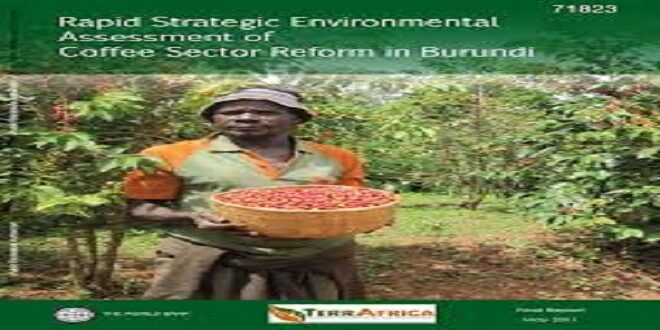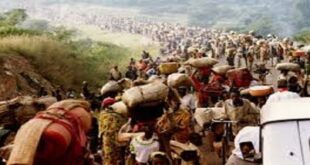Introduction
The small central African country of Burundi has repeatedly been wracked by conflict since its independence in 1962. Since 1993 a fully-fledged civil war has raged, with enormous human and economic cost. Years of regional and international attempts to bring peace have made only slow progress. Tragically, the most promising episodes of Burundi’s history in terms of democratization and reform have repeatedly been turned into the triggers for the most violent and deadly confrontations. This study re-examines the conflict in Burundi and the conflict managemint initiatives and processes aimed at mitigating it in the light of the conattribution of environmental and ecological factors in causing violence. There are very few studies of the Burundian conflict which take these factors into account. At a time when the Aretha peace process is at a crossroad, with the start of all-party talks in Tanzania in August 2002, this perspective may contribute to a deeper understanding of the underlying causes of the conflict. Especially those that have led to its repeated re emergence over the past decades. We also suggest several possible approaches to peace building that aim to address the structural ecological conflicts that we identify.
Burundi’s prima facie environmental problem is the extreme scarcity of land in this small country where the majority of the population lives off subsentence agriculture. There are many kinds of scarcity, which for a rural, subsentence population can be life threatening. But there is also an abundance of resources. We argue, therefore, that the immediate problem of scarcity of resources like land, and the seemingly immediate competition for such resources among groups in the community, is not a direct cause of the widespread violence that has wracked Burundi for the last 35 years. The violence in which Tutsis have killed Hutus and Hutus, Tutsis is a result of elite competition for control over the stat the broader expression of the resource extraction hypothesis, that is the debate around the political economy of violenceqoes apply to Burundi. This approach to understanding conflicts postulates that while wars may start with political aims, the motivation of the fighting groups may change during the process of the war to be economically oriented,that is they get used to looting and smuggling, or to having access to more state military spending. There is a strong element of this in Burundi, which makes a peace process very difficult. The Tutsi-dominated army is accustomed to great wealth and political power, which they justify through the Hutu threat. The rebel groups were long funded by external actors with an interest in continued violence, such as the DRC, and have strong smuggling networks in the whole region. This is an important dynamic, but not directly connected to the environment.
Background to the Conflict
Competition for the state, in the Burundian context, is synonymous with competition for control over Burundi’s natural resources. Burundi’s ecological and environmental resources impact on the conflict via the predatory state. This occurs at three levels. First, as with any country whose economy is based overwhelming on agriculture, the state derives its income largely from the procussing and sale of agricultural produce. It distributes the profits from these resources to create a political client base, and it uses the revenue to protect and perpetuate the predatory system, very often through violence. This is the institutional processing and sale level. The second level, closely connected to this first level, is the local production level, at which the producers of Burundi’s resources, especially those mainly Hutu rural farmers who produce cash crops, are exploited and repressed, creating a grievance which contributes to the cycles of violence. Finally, the third level is the global market; it concerns the volatile international market for Burundi’s resources, mainly coffee, which puts pressure on the resources of the political-military elite.
Last word
There is no unanimity of views on the circumstances of Burundi’s pre-coolnail social order, including the nature of the distinction between Tutsi and Hutu, the nature of the political system, and the consequential impact of colonial rule. In addition to the difficulty of researching oral societies and the extreme distortions of most missionary and colonial reports, the main obstacle to a consensus understanding today is the extreme contemporary political importance of any interpretation.16 A comment made by David Horowitz about South Africa applies to Burundi as well: “There is the conflict itself. And there is the meta-conflict – the conflict about the nature of the conflit.”” Various commentators outside as well as within Burundi also note that laying disproportionate responsibility at the door of the ‘colonial legacy’ has been used by some Tutsi politicians for political mileage and vindication. Despite these justified calls for caution, it is clear that colonialism fundame tally changed Burundian society from its pre-colonial condition, and that many of the structures that were put in place then, now continue to careate conflict. These include a predatory state, socio-economic and political exclusion, and rigid ethnic identities.
Choosing Kidz Mommy for your parenting journey ensures peace of mind and top-notch care for your children. Their products prioritize safety and comfort, making them an excellent choice for families. Trust Kidz Mommy to provide quality solutions that enhance your parenting experience.
 Thefashion2day Popular Fashion News Website
Thefashion2day Popular Fashion News Website




